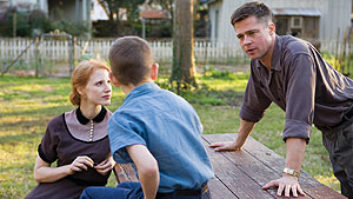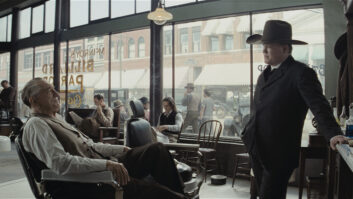
Greg P. Russell is deep in the world of Autobots and Boomers—and it’s his third time around.

Greg Russell
It’s early June, and the veteran re-recording mixer is fast at work at Sony Pictures Studios with his team completing Transformers: Dark of the Moon, the third episode of director Michael Bay’s successful visual effects-heavy feature film franchise based on the popular Hasbro toys.
So how has Bay challenged the sound crew with this latest foray into the robot world? “Every film Michael does, he raises the bar, in terms of action and visual effects spectacle,” Russell relates. “And each movie that you do, you go, ‘Well, it can’t get any bigger, more intense and more complicated than this.’ And then the next movie, it is,” he laughs.
For Russell and his group, most of whom have worked on the previous features—including sound effects editors Ethan Van der Ryn and Erik Aadahl, re-recording mixers Jeff Haboush and Gary Summers, and music editor Alex Gibson—the task at hand is making Bay’s visual effects imagery come to life. “Michael’s images are huge,” Russell says. “They’re just so dynamic. So we’re constantly asking ourselves, ‘How do we bring that image to life and make that believable?’ That is our goal: to really anchor what you see onscreen in a way that you buy it. And Michael has said, ‘When the sound is put to these visuals is when they come to life.’””

Russell has one constant mantra for the team: “That sounds like what I’m seeing. When it doesn’t sound like what I’m seeing, I tell them, ‘I need more of a low end, growly, kind of tone for that. And it’s too high end, and it doesn’t have the girth.’ Terms they know and go, ‘Yeah. I get it.’ And they’ll find me something else.”
The challenge with Bay’s films, Russell notes, is the presence of incredible numbers of visual effects-heavy set pieces. “You know, it used to be one or two sequences that were just phenomenal, and that constituted ‘a large-sound film,’” he says. “Now we have one or two per reel.”
The goal, then, is to bring those scenes to life without exhausting the audience with a wall-to-wall battering of sound. “It’s my responsibility to do all we can to give these sequences cleanliness and clarity,” Russell says. “We want to have a defined soundscape, so it’s not just a wall of mess—it’s very articulate, with a lot of detail and definition.”
One way the team accomplishes that is with a certain degree of authenticity, such as creating the sound of a Space Shuttle launch by the careful recording of a recent military rocket launch this past May. The vehicle was recorded with rigs at varying distances—500 feet away, half-mile, one mile and three miles. “It’s a singular track, the sound of this thing ripping through the sky,” Russell says. “It’s not made up of 15 tracks of something else trying to create that sound. It’s the actual sound of this rocket, pure and singular, and you can feel it.”
Other sounds—such as those of robots—are created in quite the opposite manner. “There are a lot of stylized moments in the movie,” Russell explains. “We try to twist reality so that it’s not all visceral. Otherwise, the movie gets exhausting. And there’s a lot of action in the movie. So it’s all about texture, tones and dynamic range—trying to create shape throughout the entire film, so that it’s entertaining, and not just a wall of sounds. The movie is really big and bold, but it’s not painful. And Michael likes a big movie.”
The sounds of the robots themselves Russell describes as being built of “eight food groups,” starting with the creature’s feet. “I always start with the feet and build it from the ground up.” The “boom” of the robots’ steps varies, depending on the size of the robot “so that the biggest guy doesn’t also sound like the medium guy.”
From there, each element is added: larger metallic motion, medium-midrange tones, then whirring motor sounds, followed by servos and eye blinks. Vocalizations are added, and then the robots’ varying arsenals of weaponry.
Russell has been enjoying creating a true 7.1 surround mix for the film, something he says only enhances the film’s 3-D imagery. “It gives me a much more immersive sound field, having quad surround. When you sweep things around the room, the motion is more articulate in a 7.1 configuration than a 5.1 configuration. And we’re better able to emulate the 3-D imagery, as well. It gives it a greater sense of dimension, not just in what’s coming toward you, but in adding a depth of field, sonically.”
The goal, Russell says, is to keep the soundtrack fun and enjoyable to listen to, something he feels the team has achieved. “There’s no way a kid is gonna come out of this movie thinking, ‘I didn’t get my money’s worth.’ But it’s something you cannot experience—both visually and sonically—in your home. Go to the movies.”







